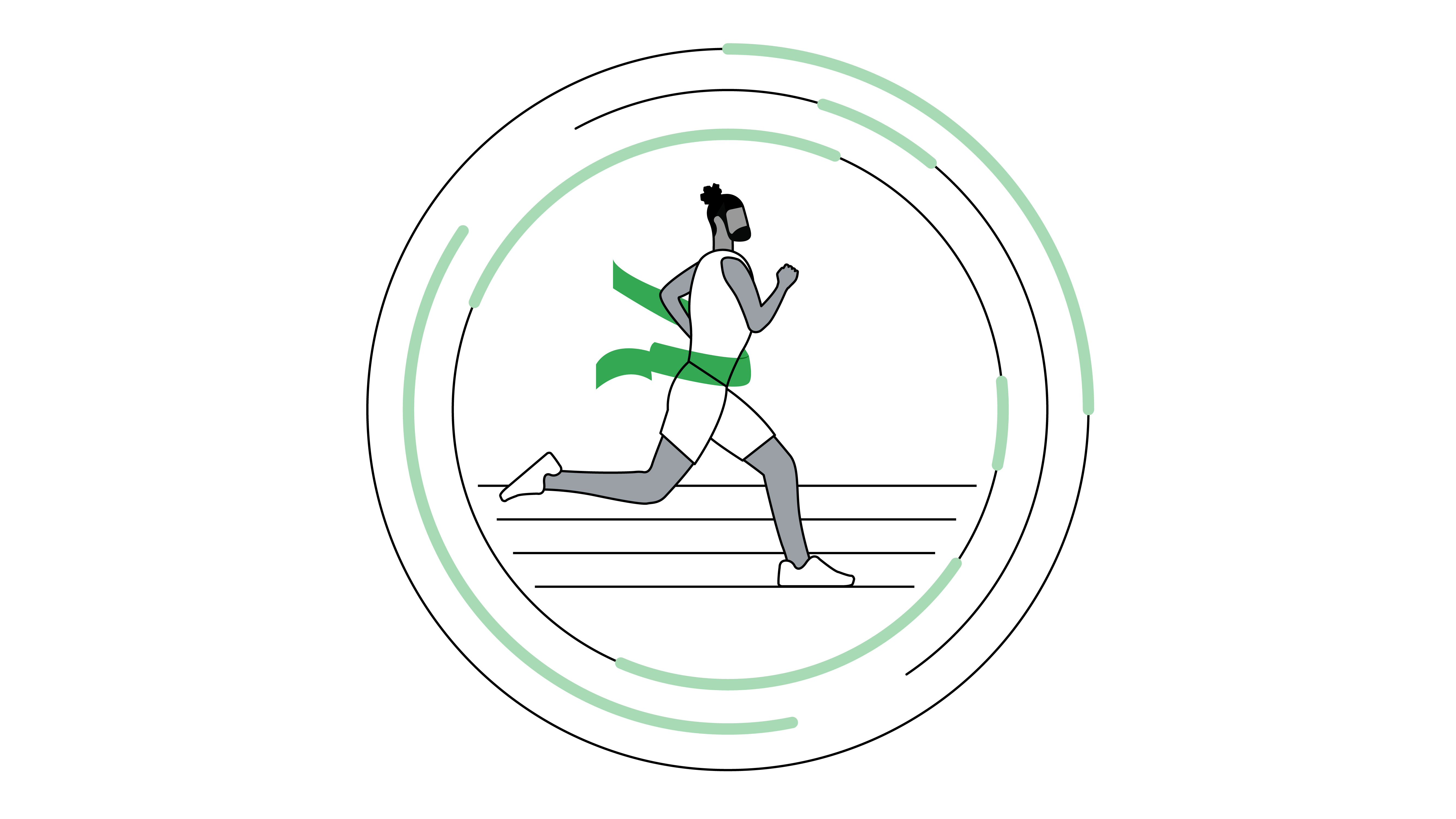What KPIs should we use? This is a question we get more often than “How are you?”. Therefore we wanted to share our current best thinking. As always, we launch and iterate, but from where we stand today we believe this makes sense.
First, a quick recap of how we look at the consumer journey along the See-Think-Do-Care framework:
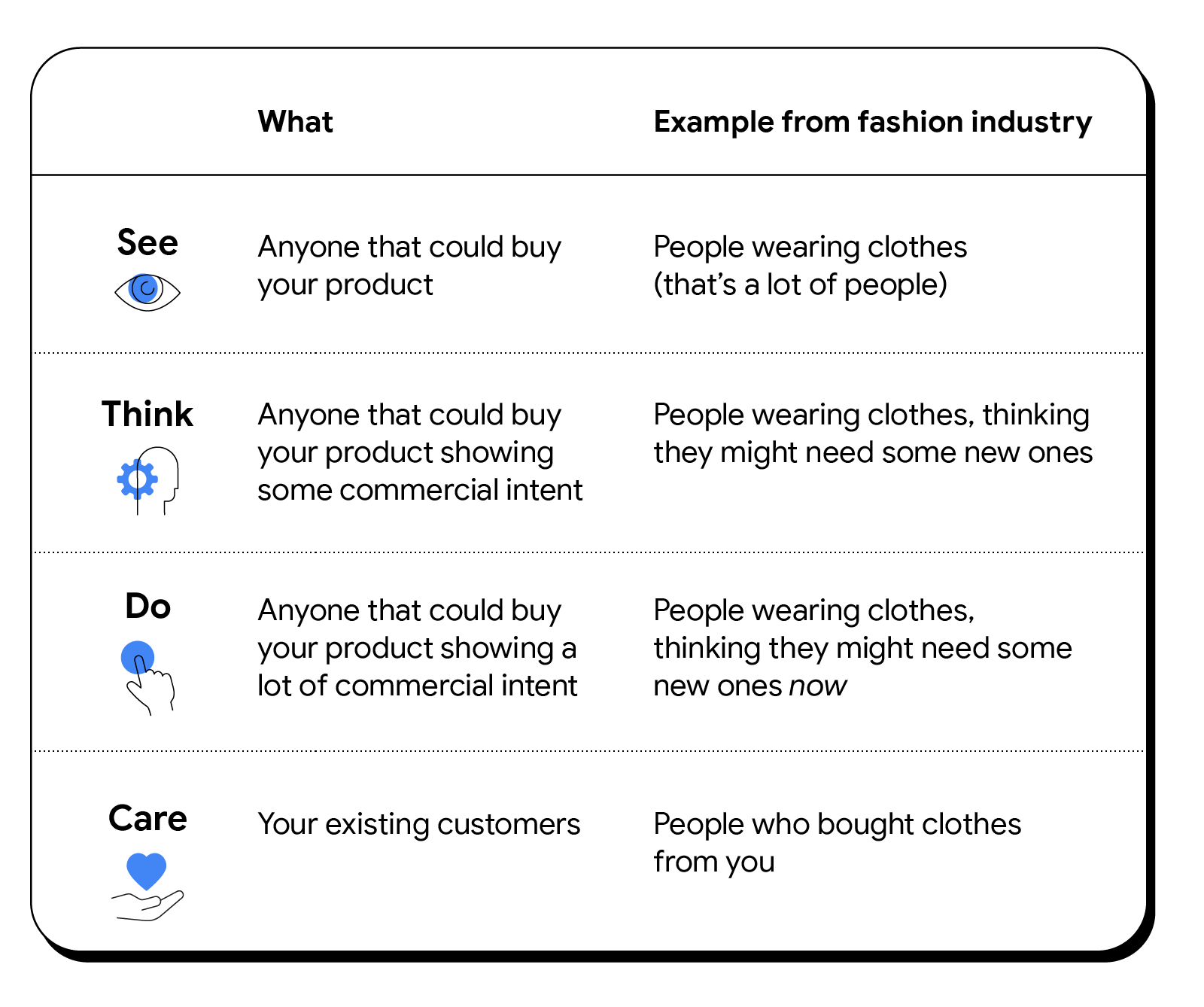
The objective of stages See, Think and Care is to drive “mental availability”, something that goes under many names such as “share of mind”, “awareness”, “attention” etc. The principle is that the more people that think about you in relation to competition, the higher the likelihood they buy you when they are ready to buy. The objective of the Do stage is to make it ridiculously easy to buy. So you need to maximise your mental availability at stages See, Think and Care, and maximise ease-of-purchase at Do stage.
So what KPIs are relevant? The term ‘KPI’, by its definition, is a measure of success. It is important to avoid a common trap: using a metric instead of a KPI. Marketers often use the terms ‘metrics’ and ‘KPIs’ interchangeably. In reality, they represent two completely different concepts. The reason for this confusion is that both KPIs and metrics refer to quantifiable measurements, but this is where the similarities stop and important distinctions begin.
KPI (what I’ve mostly been referring to as an objective) is clear, measurable, and has a defined timeframe, for example: increase T-shirt sales by 10% over the next six months.
Metrics are useful, but they're not the thing you care most about. For example, if you're driving fast, and you see police lights behind you, the thing you care most about at the moment is your speedometer. That’s your KPI, and everything else on the display panel is a metric.
The chart below demonstrates how to differentiate between your KPIs and metrics.
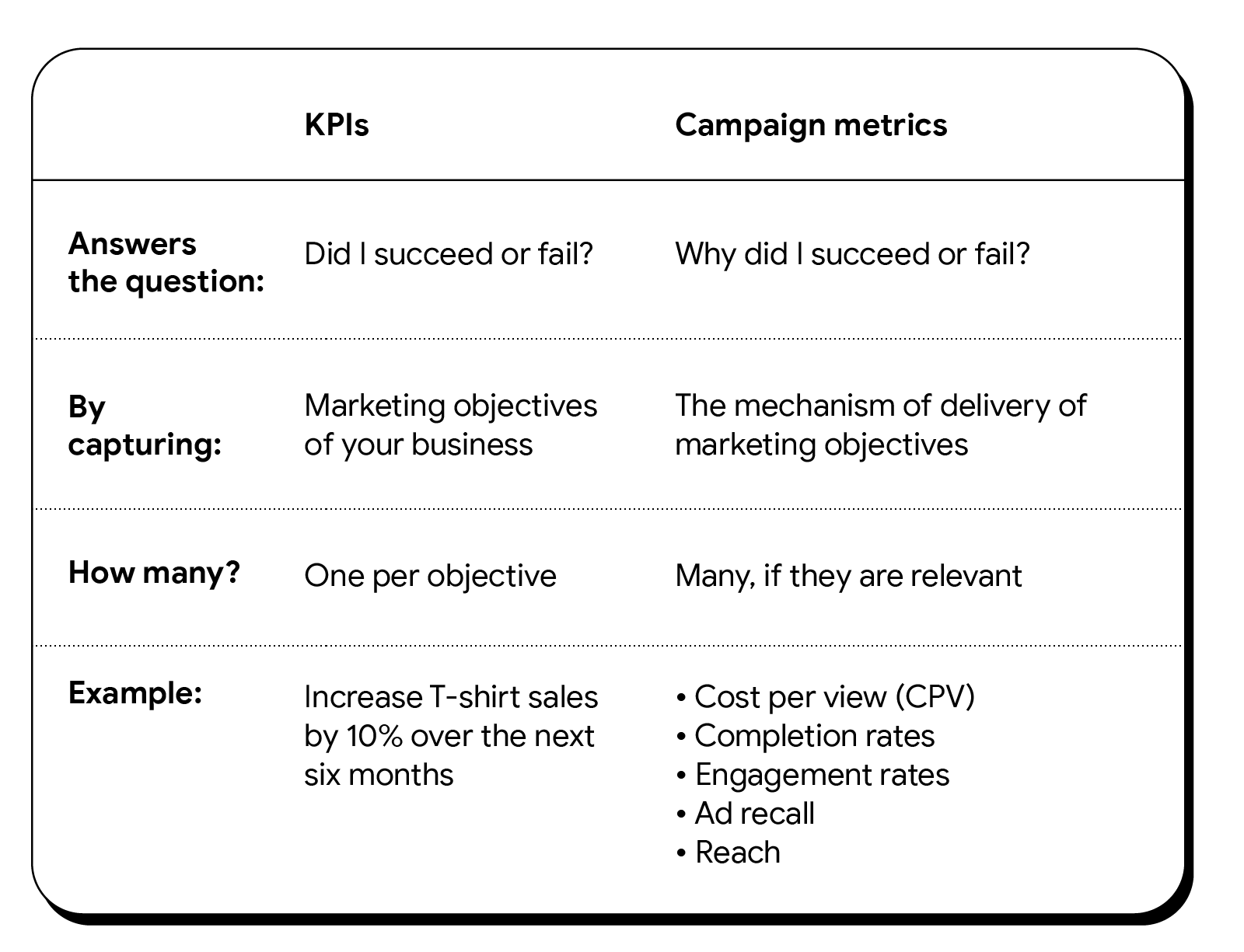
KPIs measure the end result we are looking for, for example ‘absolute profit’.
Metric is what we put into the plan but not really what we are looking for. The means to an end. For example, we can say that we want to reach X people, but that’s not really the impact we are looking for. We are probably looking to create awareness from reaching these people, but it’s still a relevant KPI because if we don’t get the awareness we can look at the input and root-cause what went wrong. If we reached enough people but didn’t get the awareness, the reach didn’t have any impact and then we need to look into why that was the case.
So, with this, what are relevant metrics and KPIs throughout the consumer journey?
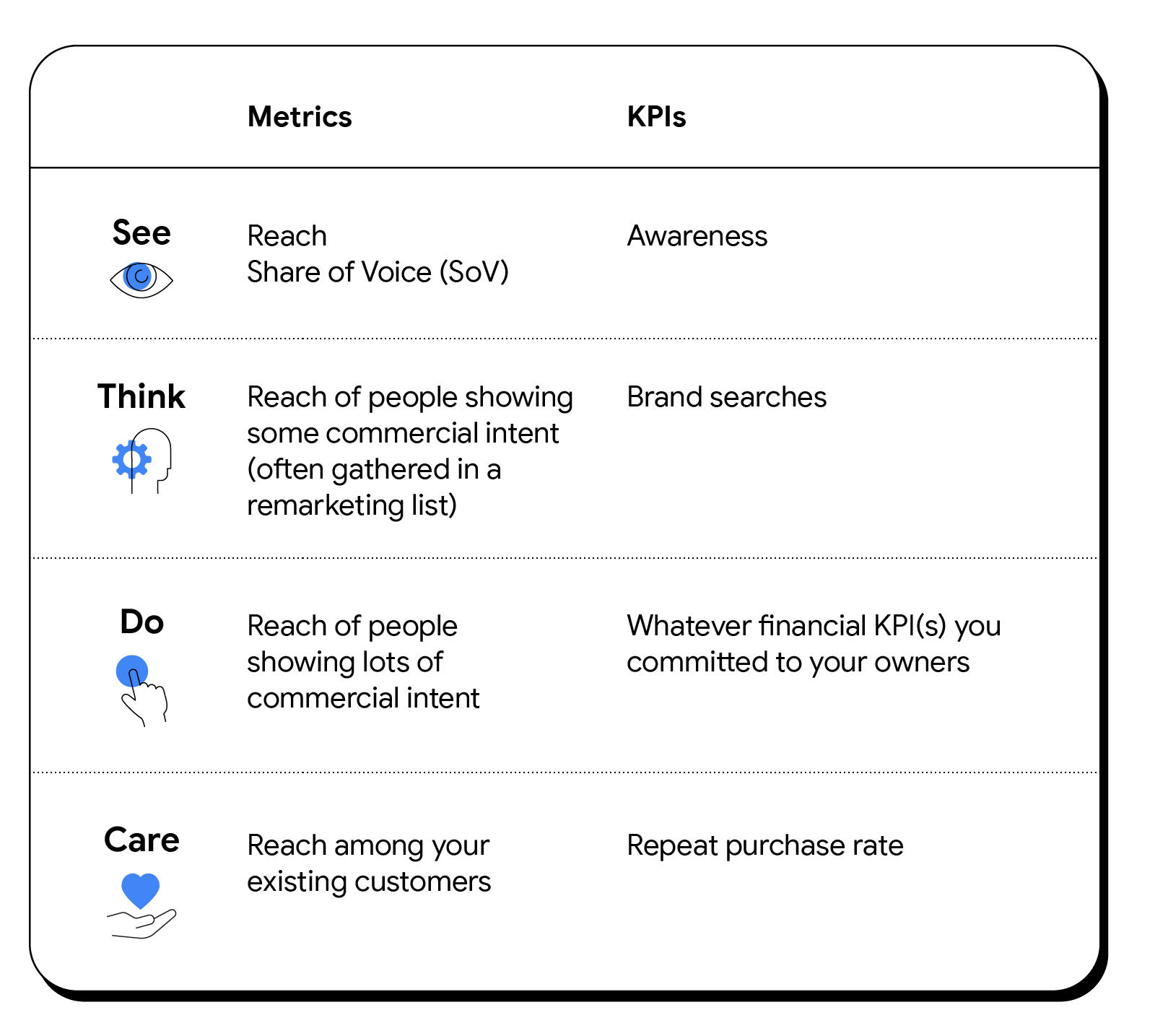
The reasons we have chosen these metrics and KPIs are outlined below:
See
- Metrics:
Reach: You need to reach people with your message if you expect to drive a change in behavior. You need to ensure that reach takes viewability into account, since reaching someone with a message they cannot see doesn’t count.
SoV: 50% reach is great if competition reaches 20%, but if competition reaches 70% you will on average have fewer people thinking about you, meaning a competitive disadvantage.
- KPIs
Awareness: You want people to think about you, your product, the benefits you provide etc as it increases the likelihood of sales when people start to become interested in buying something from your industry.
Think
- Metric:
Reach of people with some commercial intent: You need to decide which signals you deem as qualifying for commercial intent and gather all of that in a remarketing list. It can be people visiting your site, choosing to see a video, downloading an App etc.
- KPI:
Brand searches: When people start to have some commercial intent and “look around”, you don’t want them to look for competition or the industry in general, you want them to look for you. When people look for you directly you are always better off, for example in search marketing to increase your share of branded searches.
Do
- Metric:
Reach of people with loads of commercial intent: Just as in Think stage, you need to decide which signals you deem as qualifying for loads of commercial intent and gather all of that in a remarketing list. It can be people putting something in the basket but leaving it without checking out, people searching for “buy” + something etc.
- KPI:
The most important financial KPI: Every business has one or multiple owners that you’ve agreed with what the most important financial KPI is. It’s often either top-line revenue growth or bottom-line profit, or a combination of the two. What is important here is that all actions that you do, including your communication efforts, are optimised towards your most important financial KPI. Anything else would lead to sub-optimisation. Many businesses still optimise their search marketing towards a Cost Per Acquisition (CPA) target, despite the fact that there are very few companies that have promised a low CPA to their owners. In this regard, the CFO should set the output KPI for the Do stage as they are on top of what the most important financial KPI is.
Care
- Metric:
Reach of existing customers: You most probably have a CRM system of sorts where you collect your existing customers. At Care stage you want to reach them with a message to remind them of you.
- KPI:
Repeat purchase rate: To have your customers buy from you again is a good sign that they appreciate your product. That said, it’s more a testimony to a great product than a successful communication plan or loyalty program.
Worth noting is that you shouldn’t have non-specified KPIs such as ‘engagement’. Engagement is not a KPI. It needs to be defined into something measurable to qualify as a KPI.
An example of what the KPI structure could look like for a travel company:
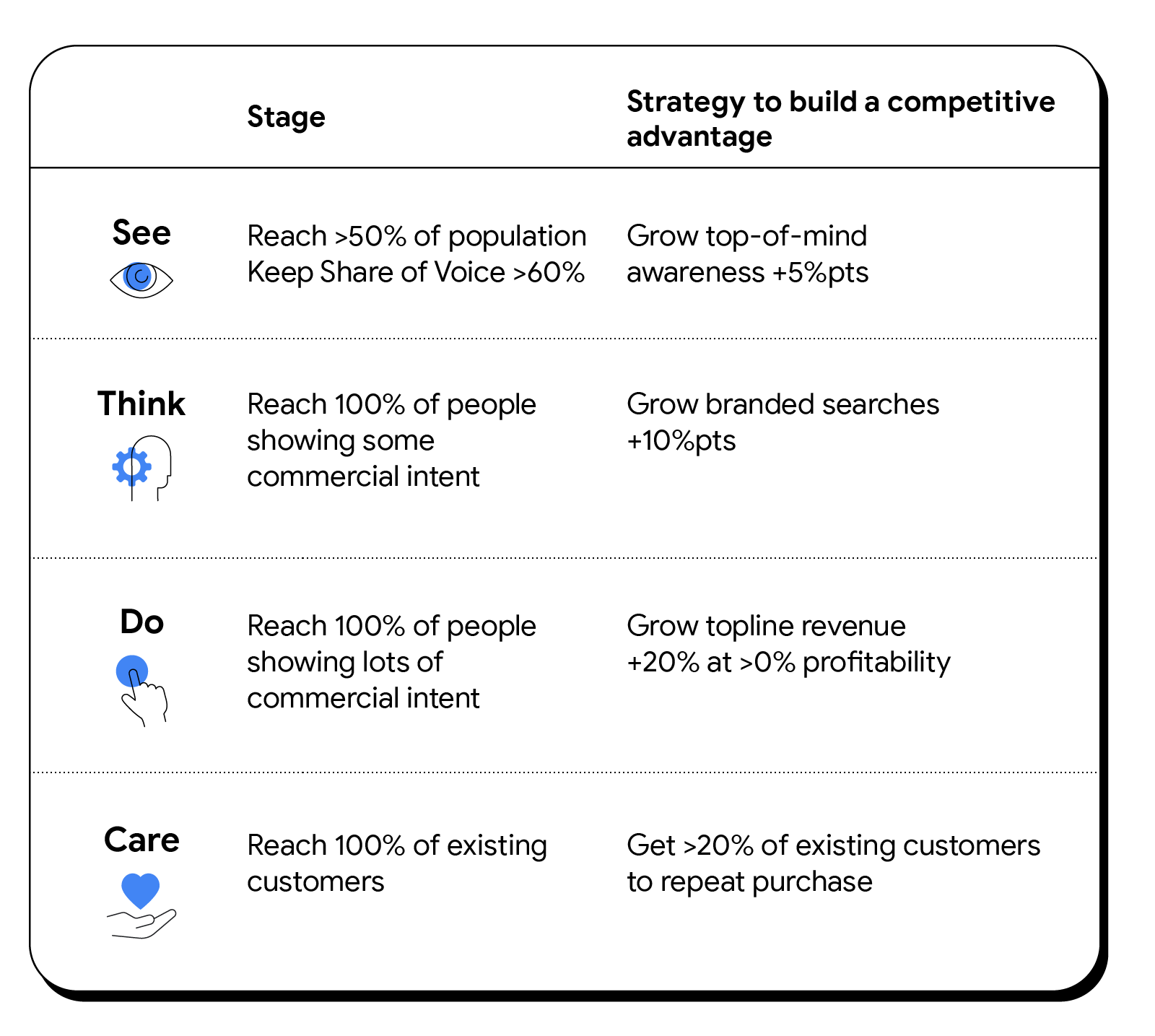
Depending on how you track your business there are many ways to measure these KPIs in practice. As one example you can measure Awareness at See stage and Brand search uplift at Think stage for a YouTube ad using Google’s free measurement tool called BrandLift.
Now, you are probably not just looking to play, but to win. In order to win over time you need to build a competitive advantage at each stage, and here is how you can do that:
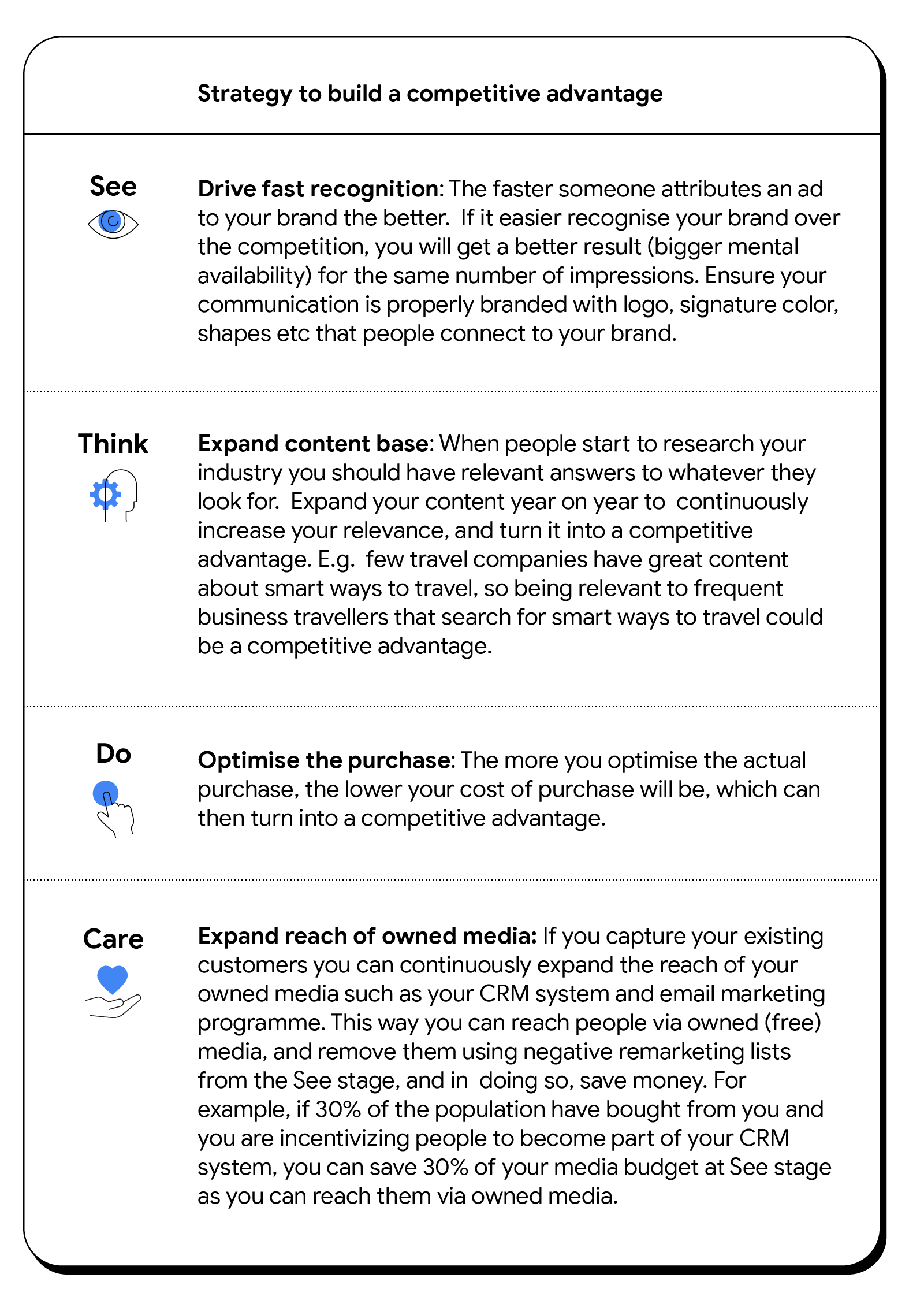
Note that there are many more things you can measure in addition to the ones we brought up in this article. For example if you look at video as an advertising media you can measure things such as View Through Rate (VTR), Cost Per View (CPV) etc. That said, these are not fundamental KPIs that will drive your business. So as a starting point, instead of starting with everything that you can measure, start with what will truly drive your business and keep it simple. We often find that people include lots of KPIs when really what they need is fewer KPIs and a good discussion about what they want to achieve.
Learn more about creating a meaningful KPI framework and measurement plan here



